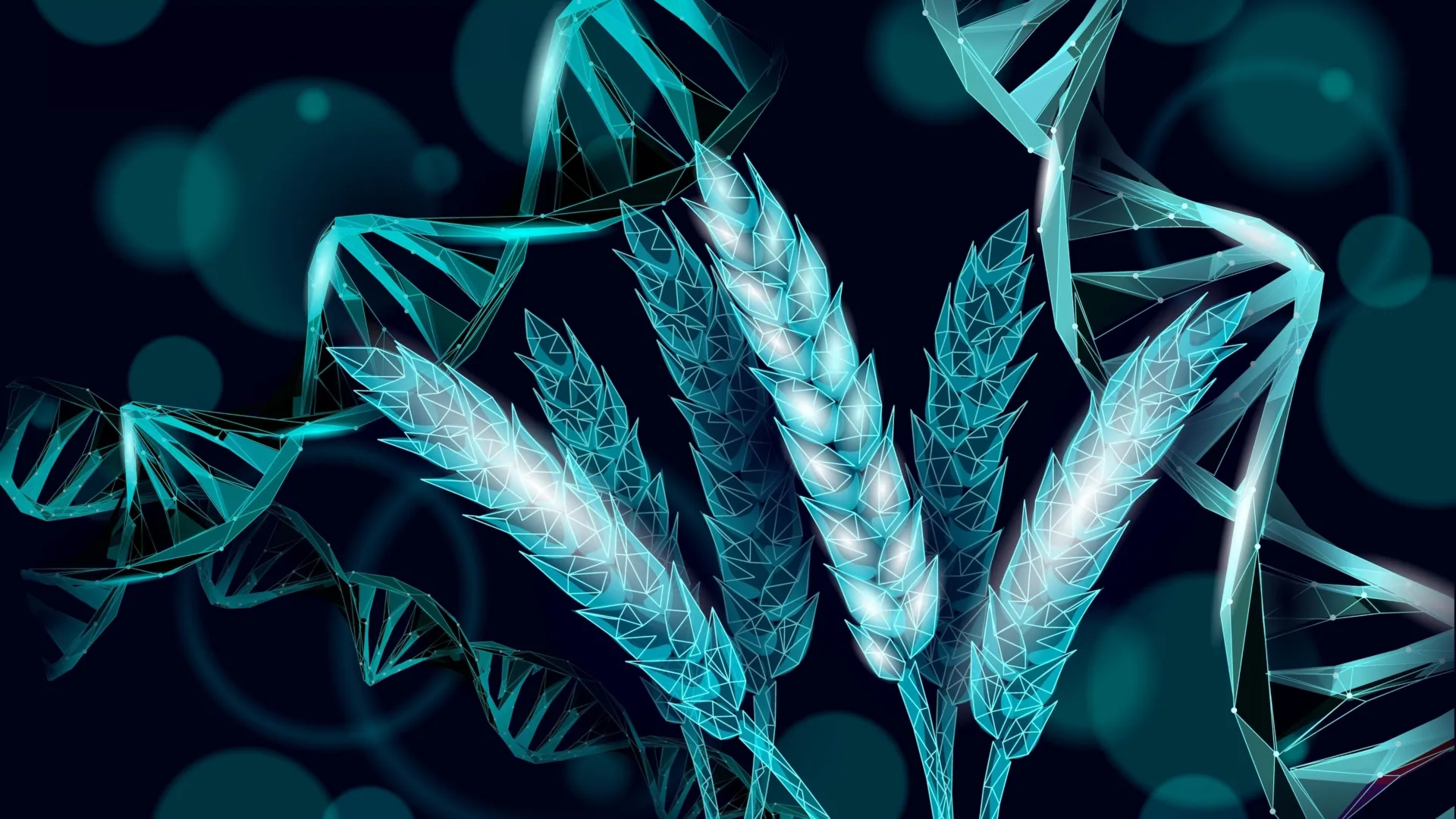CRISPR wheat that makes its own fertilizer
CRISPR-enhanced wheat helps soil bacteria generate natural fertilizer, promising cleaner, cheaper, more sustainable farming.
- Date:
- November 24, 2025
- Source:
- University of California - Davis
- Summary:
- UC Davis researchers engineered wheat that encourages soil bacteria to convert atmospheric nitrogen into plant-usable fertilizer. By boosting a natural compound in the plant, the wheat triggers bacteria to form biofilms that enable nitrogen fixation. This breakthrough could cut fertilizer use, reduce pollution, and increase yields. It also offers huge potential savings for farmers worldwide.
- Share:

Scientists at the University of California, Davis, have created wheat plants capable of promoting the formation of their own fertilizer, a development that could lower global air and water pollution and reduce farming expenses.
The work comes from a research group directed by Eduardo Blumwald, a distinguished professor in the Department of Plant Sciences. Using the gene-editing tool CRISPR, the team increased the plant's production of one of its natural chemicals. When wheat roots release this extra compound into the surrounding soil, it assists specific bacteria that can convert nitrogen from the air into a form that nearby plants can absorb. This process is known as nitrogen fixation.
The research was published in Plant Biotechnology Journal.
Potential Benefits for Food Security
For many developing regions, this advancement could offer new support for reliable crop production.
"In Africa, people don't use fertilizers because they don't have money, and farms are small, not larger than six to eight acres," Blumwald said. "Imagine, you are planting crops that stimulate bacteria in the soil to create the fertilizer that the crops need, naturally. Wow! That's a big difference!"
This wheat innovation builds on the group's previous success in rice, and similar work is underway to expand the technique to other major cereal crops.
The Global Fertilizer Problem
Wheat ranks as the world's second most productive cereal and accounts for the largest share of nitrogen fertilizer use, about 18% of the global total. In 2020, more than 800 million tons of fertilizer were manufactured worldwide, according to the United Nations Food and Agriculture Organization.
Plants typically absorb only 30 to 50% of applied nitrogen fertilizer. The remainder often runs into rivers and coastal areas, contributing to oxygen-depleted "dead zones" that harm aquatic ecosystems. Additional surplus nitrogen in soil can produce nitrous oxide, a potent greenhouse gas.
Why Wheat Needs a Different Strategy
Nitrogen-fixing bacteria generate an enzyme called nitrogenase, sometimes referred to as the "fixer" because it carries out nitrogen fixation. The enzyme functions only within these bacteria and only in low-oxygen environments.
Legumes such as beans and peas naturally form root nodules, specialized structures that create the oxygen-poor conditions these bacteria require.
Wheat and most other crops lack these nodules, which is why synthetic nitrogen fertilizer is widely used.
"For decades, scientists have been trying to develop cereal crops that produce active root nodules, or trying to colonize cereals with nitrogen-fixing bacteria, without much success. We used a different approach," Blumwald said. "We said the location of the nitrogen-fixing bacteria is not important, so long as the fixed nitrogen can reach the plant, and the plant can use it."
How the UC Davis Team Found a Workable Solution
The researchers examined 2,800 chemicals naturally made by plants and identified 20 that could encourage nitrogen-fixing bacteria to form biofilms. These biofilms are sticky coatings that wrap around the bacteria, producing a low-oxygen microenvironment suitable for nitrogenase activity. The team then mapped how plants synthesize these compounds and identified the genes involved.
With this information, they used CRISPR to adjust wheat plants so they generated larger amounts of one compound in particular, a flavone called apigenin. Because the plants produce more apigenin than they need, the surplus is released into the soil. In experiments, this apigenin stimulated soil bacteria to form protective biofilms, enabling nitrogenase to fix nitrogen in a usable form that the wheat could absorb.
Under very low nitrogen fertilizer conditions, the modified wheat also produced higher yields compared to control plants.
Large Economic Gains for Farmers
Farmers in the United States spent nearly $36 billion on fertilizers in 2023, according to estimates from the U.S. Department of Agriculture. Blumwald notes that about 500 million acres in the country are planted with cereals.
"Imagine, if you could save 10% of the amount of fertilizer being used on that land," he pondered. "I'm calculating conservatively: That should be a savings of more than a billion dollars every year."
Other authors include Hiromi Tajima, Akhilesh Yadav, Javier Hidalgo Castellanos, Dawei Yan, Benjamin P. Brookbank and Eiji Nambara.
The University of California has filed a patent application, which is now pending. Bayer Crop Science and the UC Davis Will Lester Endowment provided funding for the work.
Story Source:
Materials provided by University of California - Davis. Original written by Trina Kleist. Note: Content may be edited for style and length.
Journal Reference:
- Hiromi Tajima, Akhilesh Yadav, Javier Hidalgo Castellanos, Dawei Yan, Benjamin P. Brookbank, Eiji Nambara, Eduardo Blumwald. Increased Apigenin in DNA‐Edited Hexaploid Wheat Promoted Soil Bacterial Nitrogen Fixation and Improved Grain Yield Under Limiting Nitrogen Fertiliser. Plant Biotechnology Journal, 2025; 23 (11): 5146 DOI: 10.1111/pbi.70289
Cite This Page: